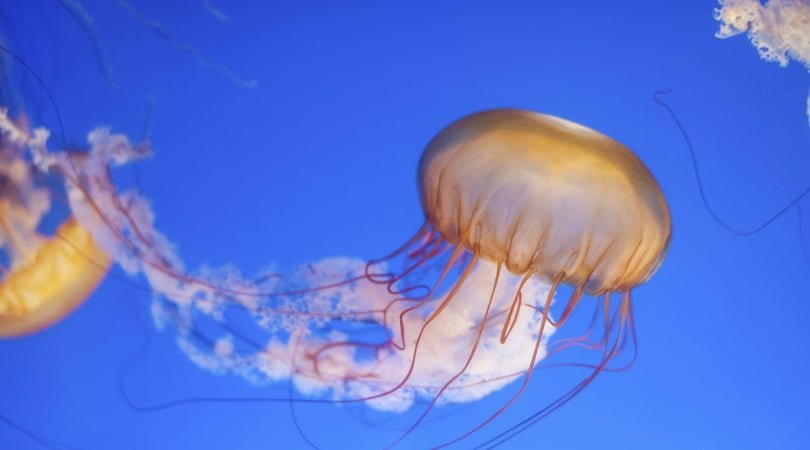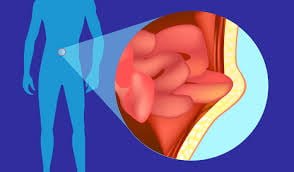Jellyfish stings are very common for people, who dive, wade or swim in the seawaters. Jellyfish has long tentacles trailing which can inject you with venom from thousands of microscopic barbed stingers. The jellyfish sting can vary in severity. In the most cases, jellyfish stings result in immediate pain and red and irritated marks on the skin. There are some jellyfish stings which can cause more whole – body (systemic) illness [1]. There are rare cases when jellyfish stings can be life – threatening. In the most cases, jellyfish stings can get better with home treatment. If you have severe reaction, then this needs emergency medical care.
Jellyfish stings symptoms
Contents
Here are the most common signs and symptoms of the jellyfish sting:
- Throbbing pain that radiates up a leg or an arm
- Swelling
- Itching
- You can have red, brown or purplish tracks on the skin – a “print” of the tentacles’ contact with your skin
- Burning, prickling, stinging pain
If the jellyfish sting is severe, then it can affect multiple body systems. These reactions can appear several hours after the stings or rapidly. Here are signs and symptoms of severe jellyfish stings [2]:
- Heart problems
- Difficulty breathing
- Weakness, drowsiness, fainting and confusion
- Muscle pain or spasms
- Headache
- Stomach pain, nausea and vomiting
The severity of your reaction depends on:
- How much of your skin is affected
- How long you were exposed to the stingers
- Your age, size and health, with severe reactions more likely in children and people in poor health
- The type and size of the jellyfish
If you have severe symptoms, then you should seek emergency treatment.

Jellyfish stings causes
We know that the jellyfish tentacles have microscopic barbed stingers. Each stinger has a tiny bulb that has venom and a coiled, sharp – tipped tube. We know that this venom is used by jellyfish to protect itself and kill prey. When someone brushes against the tentacle, then tiny triggers on its surface are releasing the stingers. The tube is penetrating the skin and it is releasing venom. The venom is affecting the immediate area of contact and it can enter the bloodstream. It is known that the jellyfish which have washed up on a beach can still release venomous stingers if they are touched.
Types of jellyfish
There are many types of jellyfish which are relatively harmless to people but there are some which can cause severe pain and they are more likely to cause a systemic reaction. Below are given the types of jellyfish which can cause more – serious problems in people:
Lion’s mane jellyfish:
This is the world largest jellyfish. The body diameter is more than 1 meter (3 feet). This type of jellyfish lives in cooler and northern regions of the Pacific and Atlantic oceans.
Sea nettle:
This type of jellyfish is common in both cool and warm seawaters. They live along the northeast coast of the United States of America. They are abundant in the Chesapeake Bay.
Portuguese man – of – war:
This type of jellyfish is also known as bluebottle jellyfish. This is a type of jellyfish which most commonly lives in warmer seas. It has a blue or purplish gas – filled bubble which keeps it afloat on the water and it is acting as a sail.
Box jellyfish:
This type of jellyfish can cause you intense pain [3]. The most common life – threatening reactions caused by jellyfish sting is associated with the box jellyfish. In the warm waters of the Pacific and Indian oceans live the more dangerous species of box jellyfish.
Jellyfish stings risk factors
Here are some conditions which are increasing your risk of getting stung by jellyfish:
- Swimming in a place known to have many jellyfish
- Playing or sunbathing where jellyfish are washed up on the beach
- Swimming or driving in jellyfish areas without protective clothing
- When you are swimming at periods in which jellyfish appear in large numbers (a jellyfish bloom)
Complications of jellyfish stings
Here are possible complications of jellyfish sting:
- Irukandji syndrome. This syndrome causes chest and stomach pain, high blood pressure and heart problems [4].
- Slowed (delayed) hypersensitivity reaction, causing blisters, rash or other skin irritations one to two weeks after the sting [5].
References:
[1] Cegolon L, Heymann WC, Lange JH, Mastrangelo G. Jellyfish stings and their management: A review. Marine Drugs. 2013;11(2):523–50.
[2] McGee RG, Isbister GK, Webster AC. Interventions for the symptoms and signs resulting from jellyfish stings. Cochrane Database of Systematic Reviews. 2013.
[3] Brinkman DL, Aziz A, Loukas A, et al. Venom proteome of the box jellyfish Chironex fleckeri. PLoS One. 2012;7(12).
[4] Greenland P, Hutchinson D, Park T. Irukandji Syndrome: What nurses need to know. Nursing and Health Sciences. 2006;8(1):66-70.
[5] Tibballs J, Yanagihara AA, Turner HC, Winkel K. Immunological and toxinological responses to jellyfish stings. Inflammation and Allergy – Drug Targets. 2011;10(5):438–46.




